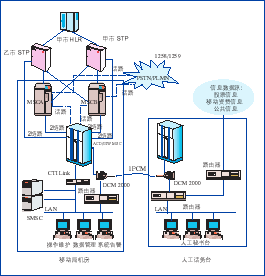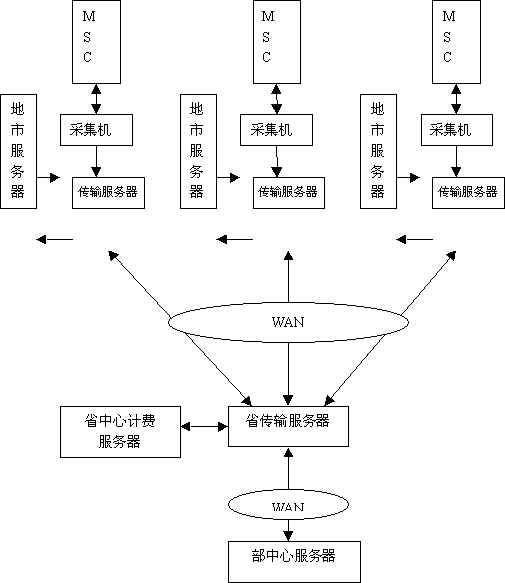
1.3. 線程通信(條件變量)
然而還有另外一種尷尬的情況:列表并不是一開始就有的;而是通過線程"create"創建的。如果"set"或者"print" 在"create"還沒有運行的時候就訪問列表,將會出現一個異常。使用鎖可以解決這個問題,但是"set"和"print"將需要一個無限循環——他們不知道"create"什么時候會運行,讓"create"在運行后通知"set"和"print"顯然是一個更好的解決方案。于是,引入了條件變量。
條件變量允許線程比如"set"和"print"在條件不滿足的時候(列表為None時)等待,等到條件滿足的時候(列表已經創建)發出一個通知,告訴"set" 和"print"條件已經有了,你們該起床干活了;然后"set"和"print"才繼續運行。
線程與條件變量的交互如下圖所示:


1.4. 線程運行和阻塞的狀態轉換
最后看看線程運行和阻塞狀態的轉換。

阻塞有三種情況:
同步阻塞是指處于競爭鎖定的狀態,線程請求鎖定時將進入這個狀態,一旦成功獲得鎖定又恢復到運行狀態;
等待阻塞是指等待其他線程通知的狀態,線程獲得條件鎖定后,調用“等待”將進入這個狀態,一旦其他線程發出通知,線程將進入同步阻塞狀態,再次競爭條件鎖定;
而其他阻塞是指調用time.sleep()、anotherthread.join()或等待IO時的阻塞,這個狀態下線程不會釋放已獲得的鎖定。
tips: 如果能理解這些內容,接下來的主題將是非常輕松的;并且,這些內容在大部分流行的編程語言里都是一樣的。(意思就是非看懂不可 >_< 嫌作者水平低找別人的教程也要看懂)
2. thread
Python通過兩個標準庫thread和threading提供對線程的支持。thread提供了低級別的、原始的線程以及一個簡單的鎖。
# encoding: UTF-8import threadimport time # 一個用于在線程中執行的函數def func(): for i in range(5): print 'func' time.sleep(1) # 結束當前線程 # 這個方法與thread.exit_thread()等價 thread.exit() # 當func返回時,線程同樣會結束 # 啟動一個線程,線程立即開始運行# 這個方法與thread.start_new_thread()等價# 第一個參數是方法,第二個參數是方法的參數thread.start_new(func, ()) # 方法沒有參數時需要傳入空tuple # 創建一個鎖(LockType,不能直接實例化)# 這個方法與thread.allocate_lock()等價lock = thread.allocate() # 判斷鎖是鎖定狀態還是釋放狀態print lock.locked() # 鎖通常用于控制對共享資源的訪問count = 0 # 獲得鎖,成功獲得鎖定后返回True# 可選的timeout參數不填時將一直阻塞直到獲得鎖定# 否則超時后將返回Falseif lock.acquire(): count += 1 # 釋放鎖 lock.release() # thread模塊提供的線程都將在主線程結束后同時結束time.sleep(6)
thread 模塊提供的其他方法:
thread.interrupt_main(): 在其他線程中終止主線程。
thread.get_ident(): 獲得一個代表當前線程的魔法數字,常用于從一個字典中獲得線程相關的數據。這個數字本身沒有任何含義,并且當線程結束后會被新線程復用。
thread還提供了一個ThreadLocal類用于管理線程相關的數據,名為 thread._local,threading中引用了這個類。
由于thread提供的線程功能不多,無法在主線程結束后繼續運行,不提供條件變量等等原因,一般不使用thread模塊,這里就不多介紹了。
3. threading
threading基于java的線程模型設計。鎖(Lock)和條件變量(Condition)在Java中是對象的基本行為(每一個對象都自帶了鎖和條件變量),而在Python中則是獨立的對象。Python Thread提供了Java Thread的行為的子集;沒有優先級、線程組,線程也不能被停止、暫停、恢復、中斷。Java Thread中的部分被Python實現了的靜態方法在threading中以模塊方法的形式提供。
threading 模塊提供的常用方法:
threading.currentThread(): 返回當前的線程變量。
threading.enumerate(): 返回一個包含正在運行的線程的list。正在運行指線程啟動后、結束前,不包括啟動前和終止后的線程。
threading.activeCount(): 返回正在運行的線程數量,與len(threading.enumerate())有相同的結果。
threading模塊提供的類:
Thread, Lock, Rlock, Condition, [Bounded]Semaphore, Event, Timer, local.
3.1. Thread
Thread是線程類,與Java類似,有兩種使用方法,直接傳入要運行的方法或從Thread繼承并覆蓋run():
# encoding: UTF-8import threading # 方法1:將要執行的方法作為參數傳給Thread的構造方法def func(): print 'func() passed to Thread' t = threading.Thread(target=func)t.start() # 方法2:從Thread繼承,并重寫run()class MyThread(threading.Thread): def run(self): print 'MyThread extended from Thread' t = MyThread()t.start()
構造方法:
Thread(group=None, target=None, name=None, args=(), kwargs={})
group: 線程組,目前還沒有實現,庫引用中提示必須是None;
target: 要執行的方法;
name: 線程名;
args/kwargs: 要傳入方法的參數。
實例方法:
isAlive(): 返回線程是否在運行。正在運行指啟動后、終止前。
get/setName(name): 獲取/設置線程名。
is/setDaemon(bool): 獲取/設置是否守護線程。初始值從創建該線程的線程繼承。當沒有非守護線程仍在運行時,程序將終止。
start(): 啟動線程。
join([timeout]): 阻塞當前上下文環境的線程,直到調用此方法的線程終止或到達指定的timeout(可選參數)。
一個使用join()的例子:
# encoding: UTF-8import threadingimport time def context(tJoin): print 'in threadContext.' tJoin.start() # 將阻塞tContext直到threadJoin終止。 tJoin.join() # tJoin終止后繼續執行。 print 'out threadContext.' def join(): print 'in threadJoin.' time.sleep(1) print 'out threadJoin.' tJoin = threading.Thread(target=join)tContext = threading.Thread(target=context, args=(tJoin,)) tContext.start()
運行結果:
in threadContext.
in threadJoin.
out threadJoin.
out threadContext.
3.2. Lock
Lock(指令鎖)是可用的最低級的同步指令。Lock處于鎖定狀態時,不被特定的線程擁有。Lock包含兩種狀態——鎖定和非鎖定,以及兩個基本的方法。
可以認為Lock有一個鎖定池,當線程請求鎖定時,將線程至于池中,直到獲得鎖定后出池。池中的線程處于狀態圖中的同步阻塞狀態。
構造方法:
Lock()
實例方法:
acquire([timeout]): 使線程進入同步阻塞狀態,嘗試獲得鎖定。
release(): 釋放鎖。使用前線程必須已獲得鎖定,否則將拋出異常。
# encoding: UTF-8import threadingimport time data = 0lock = threading.Lock() def func(): global data print '%s acquire lock...' % threading.currentThread().getName() # 調用acquire([timeout])時,線程將一直阻塞, # 直到獲得鎖定或者直到timeout秒后(timeout參數可選)。 # 返回是否獲得鎖。 if lock.acquire(): print '%s get the lock.' % threading.currentThread().getName() data += 1 time.sleep(2) print '%s release lock...' % threading.currentThread().getName() # 調用release()將釋放鎖。 lock.release() t1 = threading.Thread(target=func)t2 = threading.Thread(target=func)t3 = threading.Thread(target=func)t1.start()t2.start()t3.start()
3.3. RLock
RLock(可重入鎖)是一個可以被同一個線程請求多次的同步指令。RLock使用了“擁有的線程”和“遞歸等級”的概念,處于鎖定狀態時,RLock被某個線程擁有。擁有RLock的線程可以再次調用acquire(),釋放鎖時需要調用release()相同次數。
可以認為RLock包含一個鎖定池和一個初始值為0的計數器,每次成功調用 acquire()/release(),計數器將+1/-1,為0時鎖處于未鎖定狀態。
構造方法:
RLock()
實例方法:
acquire([timeout])/release(): 跟Lock差不多。
# encoding: UTF-8import threadingimport time rlock = threading.RLock() def func(): # 第一次請求鎖定 print '%s acquire lock...' % threading.currentThread().getName() if rlock.acquire(): print '%s get the lock.' % threading.currentThread().getName() time.sleep(2) # 第二次請求鎖定 print '%s acquire lock again...' % threading.currentThread().getName() if rlock.acquire(): print '%s get the lock.' % threading.currentThread().getName() time.sleep(2) # 第一次釋放鎖 print '%s release lock...' % threading.currentThread().getName() rlock.release() time.sleep(2) # 第二次釋放鎖 print '%s release lock...' % threading.currentThread().getName() rlock.release() t1 = threading.Thread(target=func)t2 = threading.Thread(target=func)t3 = threading.Thread(target=func)t1.start()t2.start()t3.start()
3.4. Condition
Condition(條件變量)通常與一個鎖關聯。需要在多個Contidion中共享一個鎖時,可以傳遞一個Lock/RLock實例給構造方法,否則它將自己生成一個RLock實例。
可以認為,除了Lock帶有的鎖定池外,Condition還包含一個等待池,池中的線程處于狀態圖中的等待阻塞狀態,直到另一個線程調用notify()/notifyAll()通知;得到通知后線程進入鎖定池等待鎖定。
構造方法:
Condition([lock/rlock])
實例方法:
acquire([timeout])/release(): 調用關聯的鎖的相應方法。
wait([timeout]): 調用這個方法將使線程進入Condition的等待池等待通知,并釋放鎖。使用前線程必須已獲得鎖定,否則將拋出異常。
notify(): 調用這個方法將從等待池挑選一個線程并通知,收到通知的線程將自動調用acquire()嘗試獲得鎖定(進入鎖定池);其他線程仍然在等待池中。調用這個方法不會釋放鎖定。使用前線程必須已獲得鎖定,否則將拋出異常。
notifyAll(): 調用這個方法將通知等待池中所有的線程,這些線程都將進入鎖定池嘗試獲得鎖定。調用這個方法不會釋放鎖定。使用前線程必須已獲得鎖定,否則將拋出異常。
例子是很常見的生產者/消費者模式:
# encoding: UTF-8import threadingimport time # 商品product = None# 條件變量con = threading.Condition() # 生產者方法def produce(): global product if con.acquire(): while True: if product is None: print 'produce...' product = 'anything' # 通知消費者,商品已經生產 con.notify() # 等待通知 con.wait() time.sleep(2) # 消費者方法def consume(): global product if con.acquire(): while True: if product is not None: print 'consume...' product = None # 通知生產者,商品已經沒了 con.notify() # 等待通知 con.wait() time.sleep(2) t1 = threading.Thread(target=produce)t2 = threading.Thread(target=consume)t2.start()t1.start()
3.5. Semaphore/BoundedSemaphore
Semaphore(信號量)是計算機科學史上最古老的同步指令之一。Semaphore管理一個內置的計數器,每當調用acquire()時-1,調用release() 時+1。計數器不能小于0;當計數器為0時,acquire()將阻塞線程至同步鎖定狀態,直到其他線程調用release()。
基于這個特點,Semaphore經常用來同步一些有“訪客上限”的對象,比如連接池。
BoundedSemaphore 與Semaphore的唯一區別在于前者將在調用release()時檢查計數器的值是否超過了計數器的初始值,如果超過了將拋出一個異常。
構造方法:
Semaphore(value=1): value是計數器的初始值。
實例方法:
acquire([timeout]): 請求Semaphore。如果計數器為0,將阻塞線程至同步阻塞狀態;否則將計數器-1并立即返回。
release(): 釋放Semaphore,將計數器+1,如果使用BoundedSemaphore,還將進行釋放次數檢查。release()方法不檢查線程是否已獲得 Semaphore。
# encoding: UTF-8import threadingimport time # 計數器初值為2semaphore = threading.Semaphore(2) def func(): # 請求Semaphore,成功后計數器-1;計數器為0時阻塞 print '%s acquire semaphore...' % threading.currentThread().getName() if semaphore.acquire(): print '%s get semaphore' % threading.currentThread().getName() time.sleep(4) # 釋放Semaphore,計數器+1 print '%s release semaphore' % threading.currentThread().getName() semaphore.release() t1 = threading.Thread(target=func)t2 = threading.Thread(target=func)t3 = threading.Thread(target=func)t4 = threading.Thread(target=func)t1.start()t2.start()t3.start()t4.start() time.sleep(2) # 沒有獲得semaphore的主線程也可以調用release# 若使用BoundedSemaphore,t4釋放semaphore時將拋出異常print 'MainThread release semaphore without acquire'semaphore.release()
3.6. Event
Event(事件)是最簡單的線程通信機制之一:一個線程通知事件,其他線程等待事件。Event內置了一個初始為False的標志,當調用set()時設為True,調用clear()時重置為 False。wait()將阻塞線程至等待阻塞狀態。
Event其實就是一個簡化版的 Condition。Event沒有鎖,無法使線程進入同步阻塞狀態。
構造方法:
Event()
實例方法:
isSet(): 當內置標志為True時返回True。
set(): 將標志設為True,并通知所有處于等待阻塞狀態的線程恢復運行狀態。
clear(): 將標志設為False。
wait([timeout]): 如果標志為True將立即返回,否則阻塞線程至等待阻塞狀態,等待其他線程調用set()。
# encoding: UTF-8import threadingimport time event = threading.Event() def func(): # 等待事件,進入等待阻塞狀態 print '%s wait for event...' % threading.currentThread().getName() event.wait() # 收到事件后進入運行狀態 print '%s recv event.' % threading.currentThread().getName() t1 = threading.Thread(target=func)t2 = threading.Thread(target=func)t1.start()t2.start() time.sleep(2) # 發送事件通知print 'MainThread set event.'event.set()
3.7. Timer
Timer(定時器)是Thread的派生類,用于在指定時間后調用一個方法。
構造方法:
Timer(interval, function, args=[], kwargs={})
interval: 指定的時間
function: 要執行的方法
args/kwargs: 方法的參數
實例方法:
Timer從Thread派生,沒有增加實例方法。
# encoding: UTF-8import threading def func(): print 'hello timer!' timer = threading.Timer(5, func)timer.start()
3.8. local
local是一個小寫字母開頭的類,用于管理 thread-local(線程局部的)數據。對于同一個local,線程無法訪問其他線程設置的屬性;線程設置的屬性不會被其他線程設置的同名屬性替換。
可以把local看成是一個“線程-屬性字典”的字典,local封裝了從自身使用線程作為 key檢索對應的屬性字典、再使用屬性名作為key檢索屬性值的細節。
# encoding: UTF-8import threading local = threading.local()local.tname = 'main' def func(): local.tname = 'notmain' print local.tname t1 = threading.Thread(target=func)t1.start()t1.join() print local.tname
熟練掌握Thread、Lock、Condition就可以應對絕大多數需要使用線程的場合,某些情況下local也是非常有用的東西。本文的最后使用這幾個類展示線程基礎中提到的場景:
# encoding: UTF-8import threading alist = Nonecondition = threading.Condition() def doSet(): if condition.acquire(): while alist is None: condition.wait() for i in range(len(alist))[::-1]: alist[i] = 1 condition.release() def doPrint(): if condition.acquire(): while alist is None: condition.wait() for i in alist: print i, print condition.release() def doCreate(): global alist if condition.acquire(): if alist is None: alist = [0 for i in range(10)] condition.notifyAll() condition.release() tset = threading.Thread(target=doSet,name='tset')tprint = threading.Thread(target=doPrint,name='tprint')tcreate = threading.Thread(target=doCreate,name='tcreate')tset.start()tprint.start()tcreate.start()
原文地址:http://m.survivalescaperooms.com/huxi/archive/2010/06/26/1765808.html




















